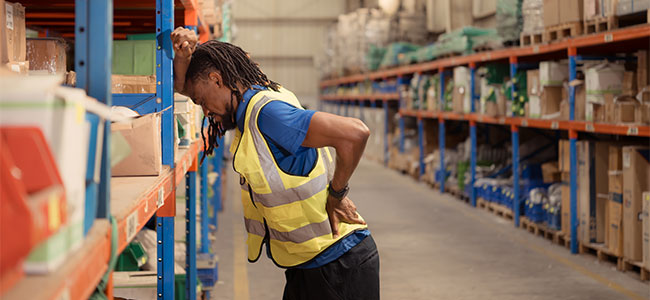
How Connected Safety Can Unlock Warehouse Safety
Using connected safety can ensure compliance with OSHA’s latest NEP, protect workers, boost efficiency, and prevent safety issues before they become safety incidents.
- By Lorenza Ordonez
- May 01, 2024
What happens when you combine labor shortages, supply chain disruptions and an increasing number of construction projects? For safety managers around the globe, that adds up to a growing number of workplace safety incidents.
While the top 10 OSHA citation rankings remained relatively unchanged from the year prior, overall citation numbers across the board increased in 2023. As businesses across numerous industries continue to struggle to remain compliant, OSHA stepped in with a recent National Emphasis Program (NEP) focusing specifically on warehouses and distribution centers. This NEP, announced in July 2023, aims to reduce current injury rates in this space, which in some sectors occur at more than twice the rate of that in private industry.
Safety hazards in warehouses and across distribution centers are abundant and wide-ranging. Some commonly seen risks center around forklift accidents and injuries; the often-invisible ergonomic injuries; as well as slips, trips, and falls. But there are others such as falling objects, hand lacerations, PPE compliance, and heat stress that can impact workers as well. These hazards are not unique to these environments, but the breadth and depth of hazards within a warehouse is what makes the environment particularly challenging.
The worst part? Businesses often lack visibility into what’s happening, or struggle to correct the pattern without the proper insights.
Fortunately, there’s good news. Technology, specifically connected safety solutions, can play a significant role in not only identifying and mitigating risks before they become OSHA citations — but in helping businesses manage their overall safety program like never before.
The Power of Connected Safety
Connected safety solutions, as the name implies, utilize networked devices such as cameras and wearables enabled by sensors — among others — to collect data on potential safety hazards, analyze the information and trigger or communicate a response to users or safety managers. They can often act as an extension of the safety manager, pulling valuable insights into a single dashboard. Enabling these safety managers, who are often spread thin and wear many hats within their organizations, to have all facets of their safety program illustrated and available with only a few clicks transforms your business to better protect your employees and your bottom line.
This article originally appeared in the April/May 2024 issue of Occupational Health & Safety.